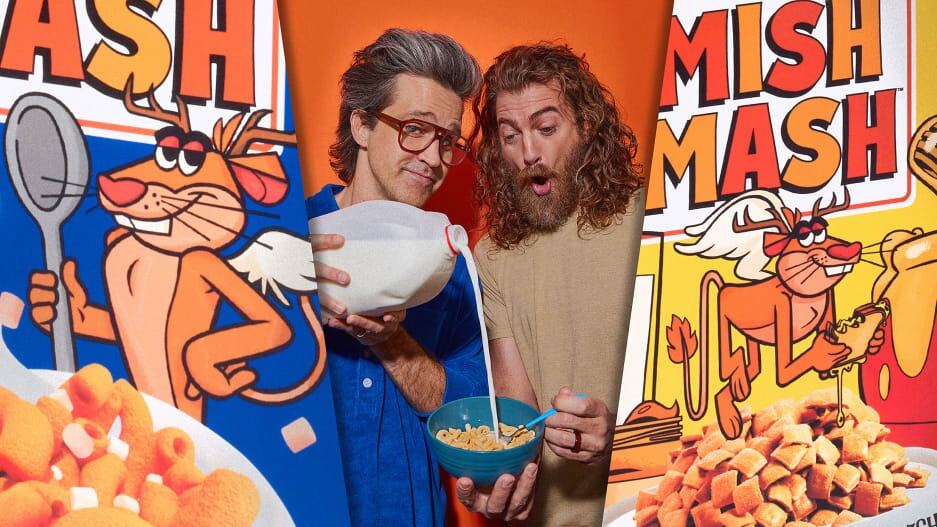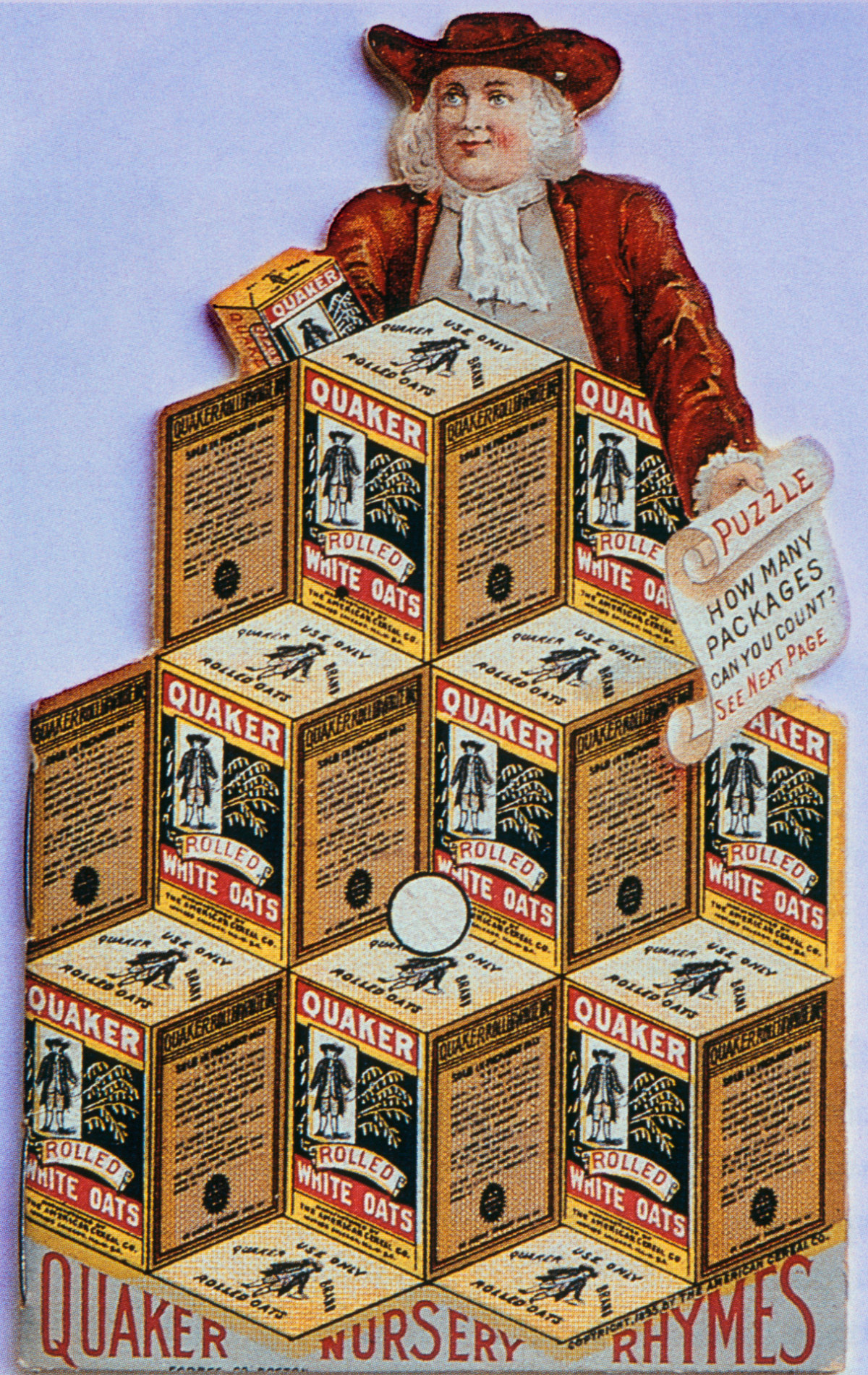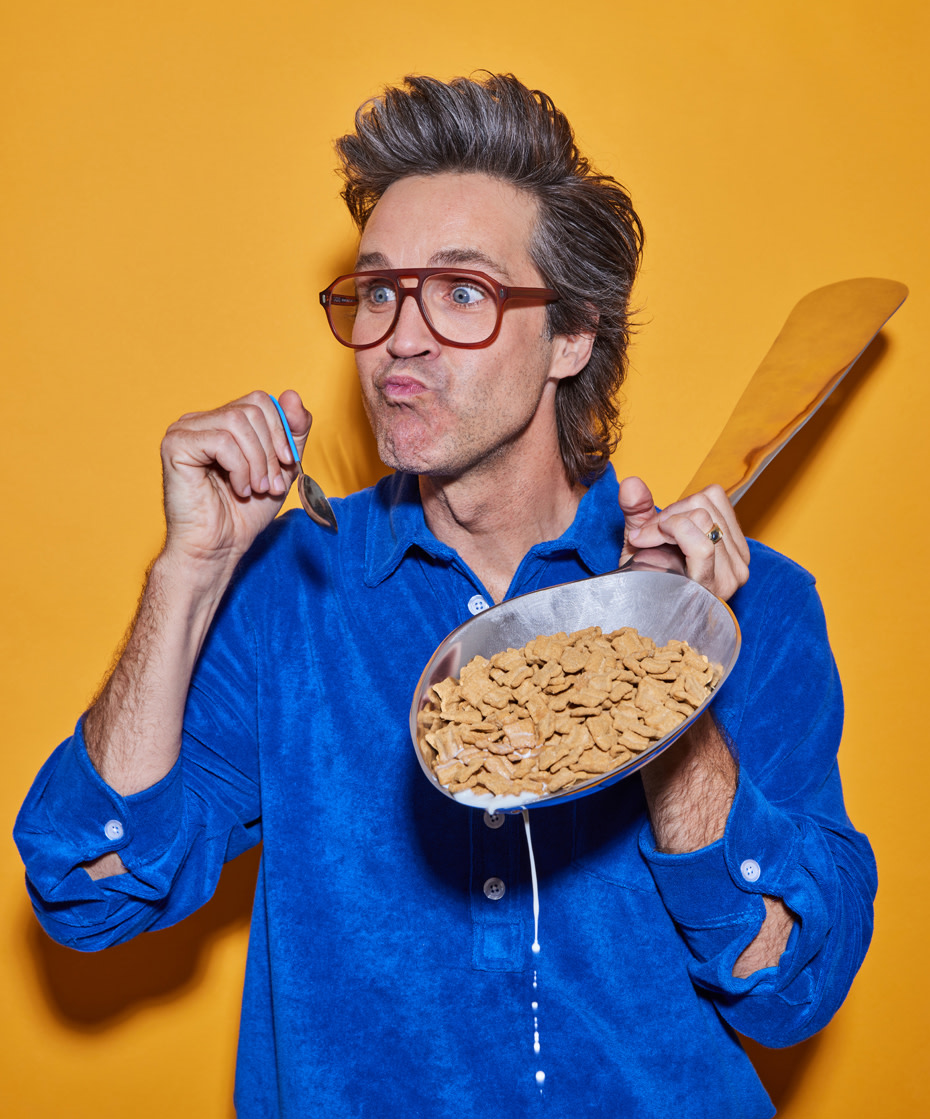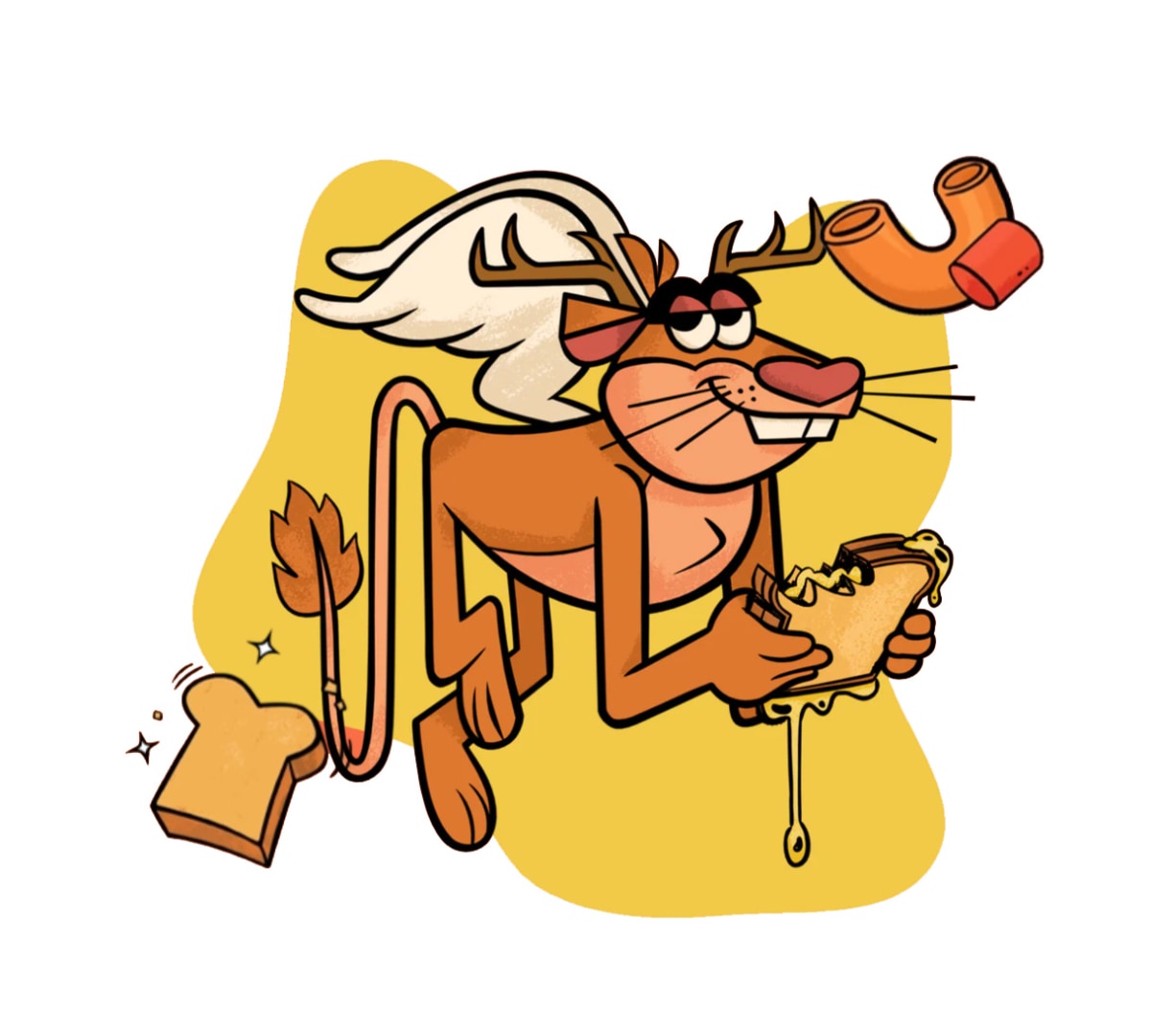- | 12:00 pm
Viral YouTubers are giving cereal the silly rebrand it needs
Cereal is on the decline, but MishMash is hoping a wacky mascot can bring some fun back to the breakfast aisle.

Rhett McLaughlin and Link Neal, hosts of the popular YouTube show Good Mythical Morning, want you to play with your food.
Some proof: The creative duo behind the umbrella company Mythical recently launched a new cereal brand MishMash, which comes in two varieties—Peanut Butter N’ Honey Sandwich and Sweet Mac N’ Mello—and is packaged in brightly colored, eye-catching boxes. Each box features a retro-style cartoon mascot called the MishMash Randler, who’s a combination of a mouse, bird, and reindeer. And on the inside of the package, customers will find a game board that can be played using the cereal as pieces.
According to Mythical’s Chief Creative Officer, Stevie Levine, MishMash was a passion project for the Mythical team. It was also an effort to bring some fun back to the cereal aisle, which they noticed had lost its charm in an era of health-focused cereals and an industry that’s dominated by a few major brands.

“There’s almost a monopoly in the cereal world, where you have these classic cereal brands, but you don’t have this inventiveness and curiosity to flavor creation,” Levine says. “That inspired both of the flavors that we launched with, too—this idea of playing with your food. Why can’t you have macaroni shaped cereal that you can blow milk through?”
MishMash hearkens back to the ’80s, “when your cereal was repped by a cool cartoon mascot, and the back of the box was kinda sweet, just like the cereal,” the company’s website reads. Other young brands like Magic Spoon are similarly using their products and marketing to relive cereal’s golden days (albeit with a healthier spin).
WHEN DID CEREAL GET SO SERIOUS?
To understand the current state of the market, it’s important to map the early history of cereal branding in the U.S. Tom Guarriello, a psychologist and founding faculty member at the School of Visual Art Branding, says that all of the cereal mascots we know and love today can be traced back to an unlikely origin: the Quaker oats man.

A trademark for the character, with his signature white hair and wide-brimmed hat, was first filed in 1877 as “a figure of a man in ‘Quaker garb.’” In 1901, American Cereal officially changed its name to The Quaker Oats Company, centering its branding around the jolly-looking mascot.
“The idea that this character was associated with the brand is one of the first examples of lending a personality to a product, and then having that personality carry a lot of the cognitive weight of the product,” Guarriello says.
Soon, other cereal brands caught on to the mascot trend. In 1932, Rice Krispies debuted its elf-like characters Snap, Crackle, and Pop. Two years later, Wheaties unveiled its first athlete collaboration with baseball star Lou Gehrig. By the ’50s and ’60s, cartoon mascots were the most popular choice for cereals. Guarriello says there’s a reason for that, too—brands realized that it was easier for cereal-eaters (especially young kids) to project their own experiences onto mascots as opposed to real people. In psychology terms, it’s a marketing strategy called broadening the projective landscape.
Cereal mascots come with personalities that are designed to stick with customers. And anyone who grew up in the ’80s and ’90s will recall the extra lengths that brands went to in order to make the cereal-eating experience memorable. The era was a heyday for interactive cereal boxes, with brands adding games and puzzles to the back of the box or sneaking toys in the bag. TV advertisements also focused heavily on connecting the unique personalities of cartoon mascots like Tony the Tiger and Cap’n Crunch to the breakfast ritual.
In the early aughts, cereal branding pivoted away from centering its mascots and more toward health-conscious options and short-lived promotional stunts, like movie-themed cereals that lasted for one or two years. Today, the breakfast pendulum is starting to swing to protein-focused morning meals, and despite a small resurgence during the pandemic, the cereal industry is indeed on a gradual downturn.
That doesn’t mean it’s impossible to succeed as a small brand. Take Magic Spoon, for example; following their launch in 2019, the company had raised over $100 million in funding by 2022 and expanded to more than 6,800 brick-and-mortar stores in early 2023. It seems that a strong brand identity, and an understanding of how to leverage it, can translate to real results.
By Guarriello’s estimation, cereal is now a mature market—meaning that there’s less possibility for profitable experimentation. In order to stand out against giants like General Mills and Kellogg’s, he says startup cereals have to fill a gap amongst the existing options. And, of course, it’s “almost a requirement” to have a memorable mascot.

MishMash is answering that two-pronged call in a number of ways. First, as Levine points out, many ‘80s and ‘90s kids are missing a time when cereal brands dared to be inventive and when mascots had a story to tell. MishMash is tapping into that nostalgia by bringing imaginative flavors to the forefront, making the box a part of the experience, and running wacky TikTok ads. They’ve also created the MishMash Randler, which required Mythical’s Creative Director Mike Pasley to sift through decades of branding history. He found that the “sweet spot” for cartoon mascots was a period when characters weren’t overly rendered and had their own unique way of interacting with the cereal.

“The Randler was a really big thing for us to get exactly right,” Levine says. “If you look at cereal mascots over time, they’ve definitely gone in different directions, from hyper cute to a little sleazy. One of our references was Pink Panther, because we like how he’s kind of sly. We liked the idea of the Randler knowing some secrets that you don’t know, but you want to be friends with him.”
Currently, you can only find the MishMash Randler and his quirky cereal flavors online, making the brand’s prices somewhat prohibitive (a two-pack is $19.99 before shipping). Levine says that’s a function of the brand being a small business that’s entering an established market. Sometime soon, though, the Mythical team hopes to bring the ‘80s spirit of playfulness back to store shelves.
“We’re not a big guy, we’re not General Mills or Post,” Levine says. “Brands like that have wide distribution, they have decades and decades of consumer behavior to support the amount that they can produce and so their prices are lower. We’re a baby brand—it costs a lot more for us to produce our cereal. Our hope is that people do want to see it on the shelves in their retail stores, whether that be at a major grocer like Kroger or Walmart or Target. That’s our hope.”








































